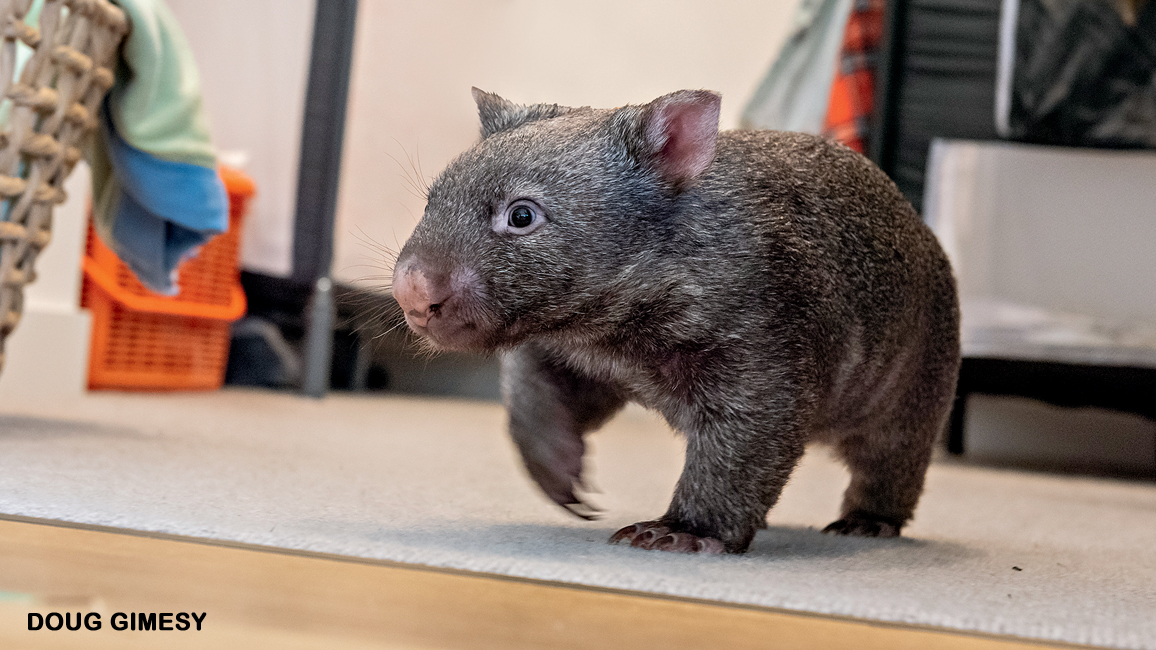
Wombats
By Anne Cissel; photos by Doug GimesyLast year, a few baby wombats found a temporary home in a top-floor apartment in Australia.

Emily Small tries to do a little work while young Landon and Bronson snooze nearby. Emily isn’t a typical working mom. She has baby bare-nosed wombats to take care of! How did she end up sharing her home with these adorable creatures? Let’s find out!

LOCKDOWN NURSERY
When COVID-19 hit Australia in early 2020, the country went into total lockdown. Emily and her mom run an orphanage for wombats nearly 300 miles away from Emily’s home near the city of Melbourne. Emily couldn’t easily travel there during the lockdown. So, she created a wombat nursery in her apartment!
Sadly, these babies’ real mothers died after being hit by cars. Emily had to become their new mom—cuddling them, feeding them, and keeping them safe. One day, she will release them back into the wild.
Bare-nosed wombats are found only in southern and eastern Australia. They are marsupials (mar-SOOpee- ulz), mammals that live tucked inside their mothers’ pouches when they are babies. In the wild, baby wombats, or joeys, stay in their mothers’ pouches for six to seven months. And they keep close to their moms for up to three years.
BALANCING ACT
Emily also has a regular job with a wildlife rescue group. So, during the lockdown, she had to work from home—while caring for the joeys at the same time. “They are so cute and distracting,” she said. “Like many children, when awake, they need and want your attention!” Along with feeding and cuddling the joeys, Emily had to clean up a lot of poop and pee. She washed four loads of laundry every day!

GETTING COMFORTABLE
Emily learned quickly that the joeys she cared for—Landon, Bronson, and Beatrice—each had their own quirky personalities. Landon, she said, “buzzes with excitement and races around, bouncing and letting out little happy scream-hisses.” Bronson is quieter. But once he gets comfortable, she said, “there is no stopping him. He wiggles and smiles and loves a snuggle.” Beatrice was rescued when she was older than the others. She wasn’t used to humans. At first, she growled and even tried to attack Emily. But she soon became gentle and playful.
READY FOR THE WILD
The joeys had to prepare for life in the wild. That is why Emily let the joeys nibble on grass and dirt from their natural habitat. The grass and dirt have good germs the joeys need to stay healthy. Emily also gave the little wombats plenty of sticks to chew on. Like rodent teeth, their teeth never stop growing. So, they have to gnaw on things to wear down those choppers. Soon, Emily’s furniture had wombat teeth marks!
Wombats grow to be about three feet long and weigh nearly 60 pounds. But lockdown ended before the joeys outgrew the apartment. Emily moved them back to the orphanage. There, they are exploring the outdoors in a pen and getting ready for their next adventure: life in the wild!
















